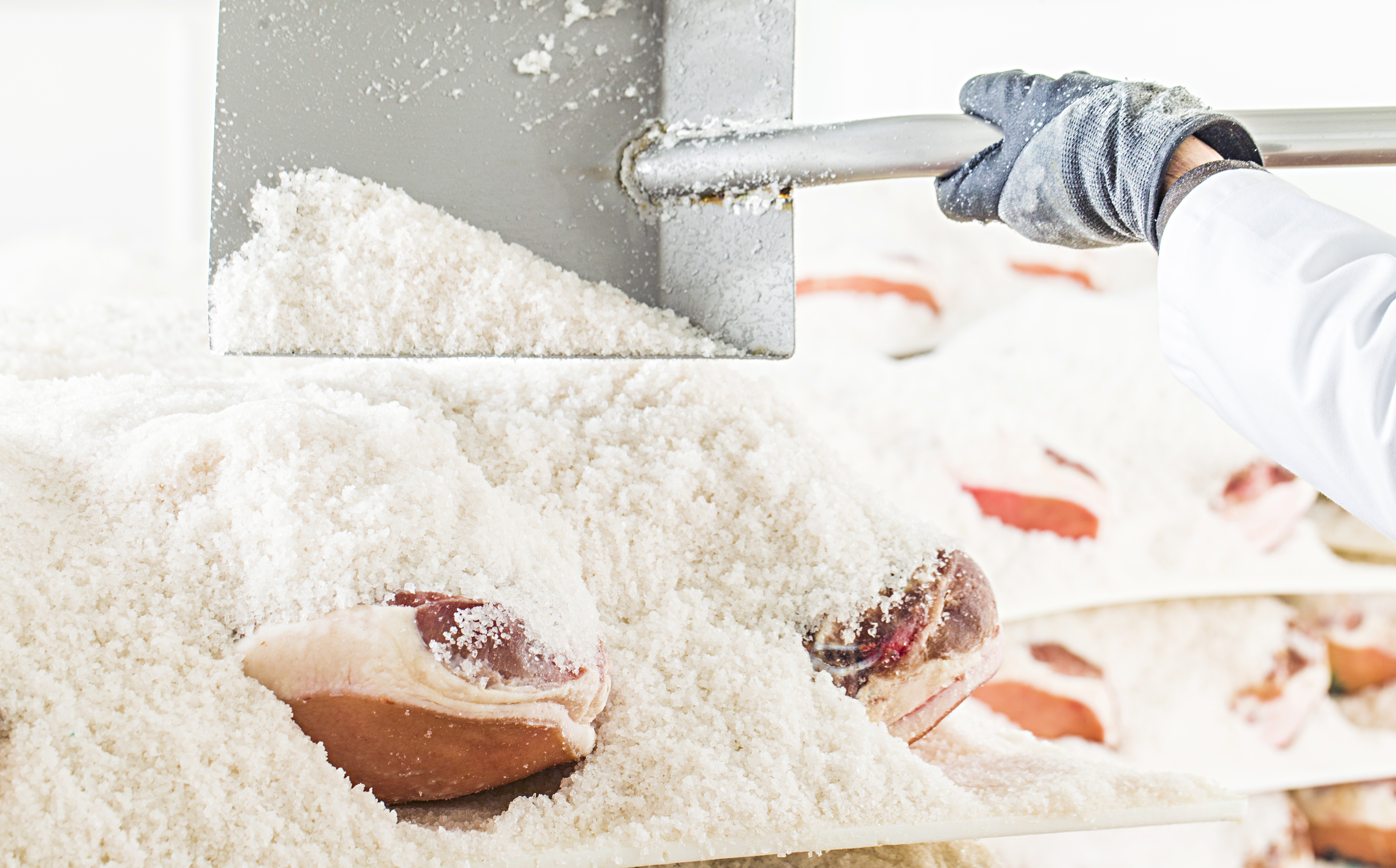An oft-repeated phrase regarding the time it takes to salt a ham goes along the lines of “one day of salt per kilo”. As a consequence, according to this popular saying, a fresh ham weighing 13 kg would need to spend 13 days buried in salt. We’re going to try and explain what salting a ham involves and where this phrase might come from.
Salt has traditionally been used to preserve fresh products in an attempt to make them last longer. This process gives us cured ham. The salt extracts water from the meat thereby suppressing micro-organisms that might decompose it. But let’s take it step by step.
First of all, we need to know the weight of the ham because, as we have already mentioned, this will dictate the number of days that it will spend in the salt. Forgive us for not revealing the formula we use at La Estrella del Jamón, but we can assure you that if we followed popular wisdom, our ham would be pure salt.
After classifying the ham by size, we move on to the bleeding. Generally, when we receive pieces of meat, they have already been bled, but we have to make sure because if any blood is left inside, it can decompose and give the ham a very unpleasant taste and smell. We have an automatic bleeder at our facilities at Cuarte de Huerva. In Monreal del Campo, where we make Jamón de Teruel PDO Sierra Lindón, due to the lower production volume, each piece is hand-processed by our skilled operators.
Once the ham has been bled, it is literally buried in salt. This process, familiar in many homes once upon a time, required a prior step. A heavy object was placed on the ham to help extract water and reduce the risk of microbial contamination. This part of the traditional process is not necessary these days thanks to our modern salting chambers where temperature and humidity are kept under strict control. This humidity control also helps reduce the quantity of salt and achieve greater regularity in salt overall. The formula of “one day of salt per kilo” might have been perfect for years when the winter was forecast to be dry. The salt needs humidity to dissolve a little and help it penetrate the meat. If it is very dry, it takes a long time to enter. Consequently, in a dry winter, ham would have a sweet taste but using the same formula in a damp winter, the ham took on much more salt than necessary. Probably, this famous formula comes from the region of Salamanca, where the cold, dry climate required this amount of time in salt.
In the industry, the ham is salted in stainless steel containers (perforated so the liquids can run out), in individual trays or in the most traditional way, stacked up and covered in salt with a shovel. The process takes place in refrigerated chambers at a temperature of around 2ºC and relative humidity of approximately 90%.
After the number of days deemed necessary by each ‘ham master’ to achieve the right balance between food safety and optimum saltiness on the palate, the hams are washed with warm water to remove surface salt.
Once washed, each ham now holds the salt that will accompany it throughout the entire curing process. After this phase, the salt has barely penetrated one centimetre inside the ham. It spreads throughout the piece of meat during the post-salting or settling, but we’ll tell you about that another day.


